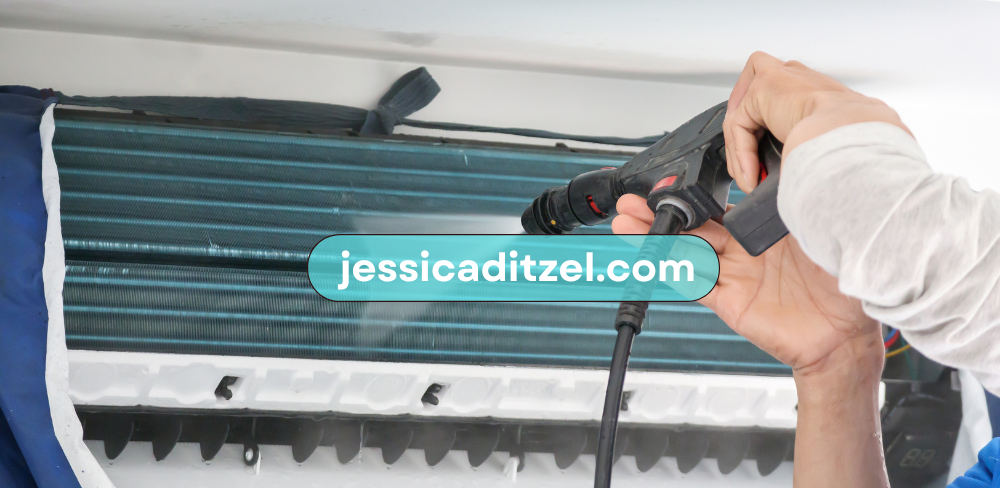If you are a Mitsubishi air conditioning unit owner or technician, a question you may often come across is “Can You Reverse Airflow on a Mitsubishi PEFY-P18N?” Understanding the functionality of airflow in HVAC systems, particularly for Mitsubishi’s PEFY-P18N, can help you optimize performance, energy efficiency, and overall comfort in your environment. Airflow plays a crucial role in cooling and heating performance, and adjusting it can have significant effects on how well your system operates.
In this article, we’ll explore the possibility of reversing airflow on a Can You Reverse Airflow on a Mitsubishi PEFY-P18N, including the steps involved, benefits, and common misconceptions. We’ll also provide tips for optimizing airflow to get the most out of your HVAC system.
What Is the Mitsubishi PEFY-P18N and How Does Airflow Work in This Unit?
Before diving into whether you can reverse airflow on a Mitsubishi PEFY-P18N, it’s important to understand what the unit is and how airflow functions within it.
A. Overview of the Mitsubishi PEFY-P18N
The Mitsubishi PEFY-P18N is a popular indoor air conditioning unit used in a variety of commercial and residential settings. This model is part of the larger Mitsubishi Electric family, known for energy efficiency, reliability, and high-quality climate control solutions. Like most HVAC systems, the PEFY-P18N controls the flow of air within a building to either heat or cool a room.
B. How Does Airflow Work?
Can You Reverse Airflow on a Mitsubishi PEFY-P18N is generated by a fan, which pushes air through the system’s ducts. The unit is designed to supply either cool or warm air into the space, depending on the settings. The direction of airflow is set up according to the design of the ducts and the unit itself, which typically pulls air from the intake, conditions it, and then pushes it out through the supply vents.
Can You Reverse Airflow on a Mitsubishi PEFY-P18N?
The core question of this article is: Can you reverse airflow on a Mitsubishi PEFY-P18N? Let’s look at the answer in detail.
A. Airflow Reversal: Is It Possible?
Technically speaking, the answer to can you reverse airflow on a Mitsubishi PEFY-P18N is generally no in the standard way we think of airflow. The unit is engineered for a specific airflow direction—air is drawn into the system, conditioned, and then pushed out into the space. Reversing airflow typically would involve redesigning the entire duct system, which is neither practical nor recommended.
B. Why Can’t You Reverse Airflow?
The PEFY-P18N and similar HVAC units are designed to move air in one direction because they rely on the heat exchange process. The evaporator coil is positioned to receive incoming air, extract heat, and then blow cooled air out. Reversing this process would interfere with the unit’s ability to function properly, causing reduced efficiency and potential damage.
What Happens if You Attempt to Reverse Airflow?
Now that we’ve covered whether you can reverse airflow on a Mitsubishi PEFY-P18N, it’s important to understand what could happen if you attempt to reverse the airflow.
A. Impact on Unit Efficiency
If you try to reverse airflow on a system not designed for it, the unit will likely struggle to maintain its performance. HVAC systems depend on proper airflow for cooling and heating, and reversing this could cause issues such as poor temperature control, longer run times, and increased energy consumption.
B. Risk of Damage
Forcing a Can You Reverse Airflow on a Mitsubishi PEFY-P18N or similar unit to reverse airflow could lead to system strain and potential component damage. The fan motor, ductwork, and heat exchange components are not designed to handle air moving in the opposite direction, which could result in mechanical failure over time.
Airflow Optimization: What You Can Do Instead of Reversing Airflow on a Mitsubishi PEFY-P18N
Instead of asking can you reverse airflow on a Mitsubishi PEFY-P18N, it’s more practical to look at ways to optimize airflow without causing harm to your HVAC system.
A. Adjusting Fan Speed
One of the most effective ways to improve airflow in your Mitsubishi PEFY-P18N unit is to adjust the fan speed. Most Mitsubishi systems offer multiple fan speed settings, allowing you to control how much air the unit pushes into a room. By optimizing fan speed, you can enhance comfort without tampering with the natural direction of airflow.
B. Clean and Maintain Filters
Regular maintenance, such as cleaning or replacing air filters, ensures that your Can You Reverse Airflow on a Mitsubishi PEFY-P18N operates efficiently. Blocked or dirty filters can restrict airflow, making it seem like the system isn’t delivering the right amount of conditioned air.
C. Ductwork Inspection
Poorly designed or obstructed ducts can cause uneven airflow distribution. Inspecting your ductwork for any blockages or design flaws can help improve the overall airflow without needing to reverse it.
Common Misconceptions About Reversing Airflow on the Mitsubishi PEFY-P18N
The question of Can You Reverse Airflow on a Mitsubishi PEFY-P18N often stems from common misconceptions about how HVAC systems work. Here are a few myths to debunk.
A. Reversing Airflow Is the Same as Adjusting Direction
Some believe that reversing airflow is the same as changing the direction of air distribution, but they are two different concepts. While you can adjust air distribution with louvers or dampers, reversing airflow would alter the entire operation of the system, which isn’t recommended.
B. Reversed Airflow Improves Energy Efficiency
Contrary to popular belief, reversing airflow won’t improve energy efficiency. In fact, it could increase energy usage as the unit works harder to achieve the desired temperature. It’s better to focus on enhancing airflow in its intended direction rather than trying to reverse it.
When Is Airflow Adjustment Needed in the Mitsubishi PEFY-P18N?
While reversing airflow isn’t a solution, adjusting the airflow in your Mitsubishi PEFY-P18N unit is essential in some situations.
A. Addressing Hot and Cold Spots
If you experience uneven cooling or heating, adjusting the airflow distribution through vents or using zoning controls may help. This can direct more air to areas that need it without the need to reverse airflow.
B. Improving Air Circulation in Large Spaces
In large spaces, airflow may need to be increased to maintain comfort. Adjusting fan speeds, adding auxiliary fans, or enhancing duct design are more effective ways to improve circulation than reversing airflow.
Professional Assistance: When to Consult a Mitsubishi Technician
Sometimes, the airflow issues you’re facing with your Mitsubishi PEFY-P18N may require professional intervention. Here’s when to consider consulting an expert.
A. Airflow Blockages
If your system is not delivering the right amount of airflow, and cleaning or adjusting the settings hasn’t helped, it’s best to have a professional inspect your system for blockages or ductwork issues.
B. Complex Installations
For complex installations where airflow management is crucial, a Mitsubishi-certified technician can ensure that the system is installed and configured for optimal performance, avoiding any need to reverse airflow.
Conclusion: Can You Reverse Airflow on a Mitsubishi PEFY-P18N?
In conclusion, while the idea of reversing airflow on an HVAC system might sound appealing, the answer to “Can You Reverse Airflow on a Mitsubishi PEFY-P18N is generally no. The unit is designed to work with air flowing in a specific direction to maintain efficiency, comfort, and functionality.
However, there are many effective ways to optimize airflow in your Can You Reverse Airflow on a Mitsubishi PEFY-P18N system, such as adjusting fan speeds, cleaning filters, and inspecting ducts. Instead of reversing airflow, focusing on these adjustments can enhance performance and ensure long-term reliability.
If you’re still facing airflow challenges, consult with a Mitsubishi HVAC professional to diagnose the issue and find the best solution without compromising the integrity of your system.




